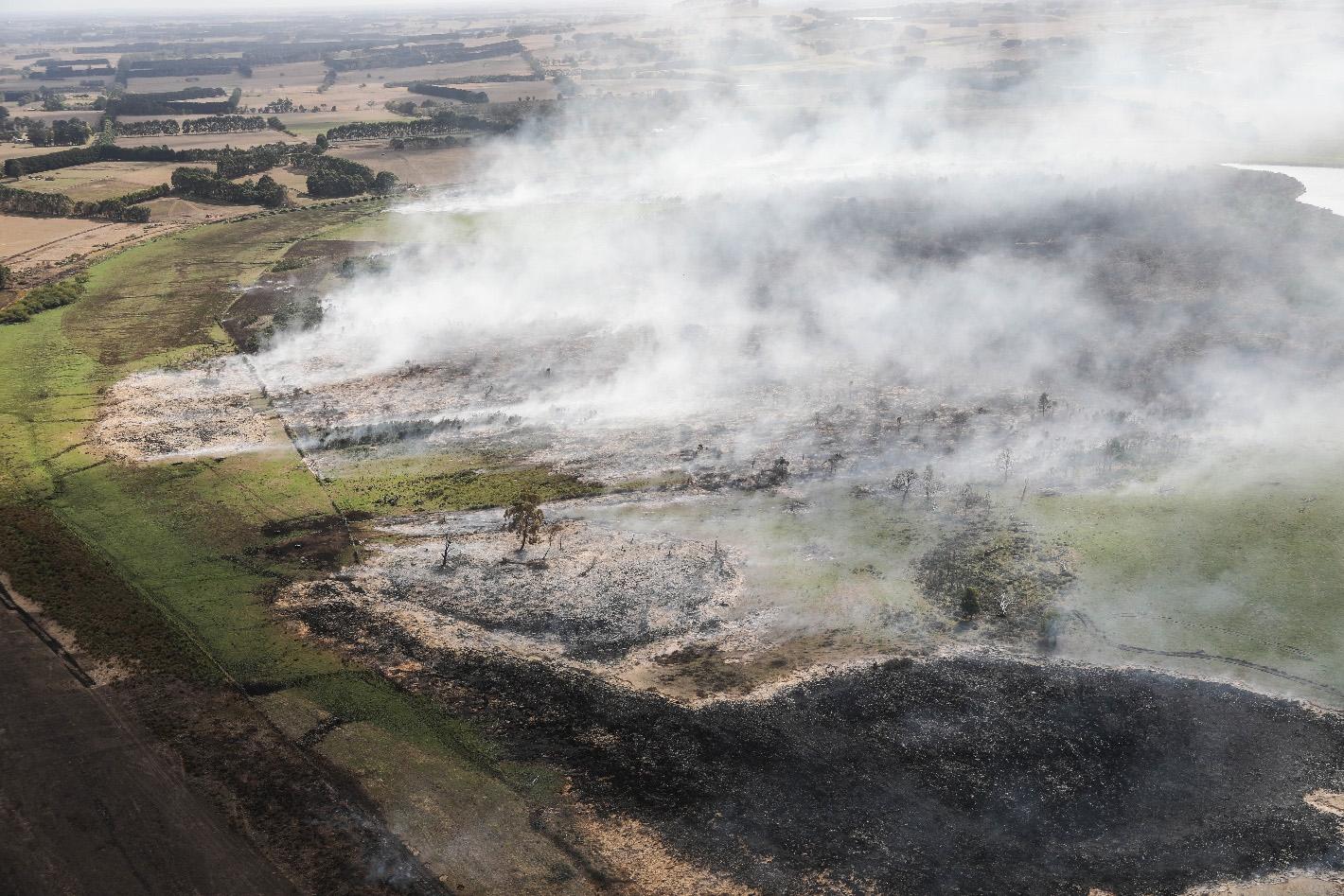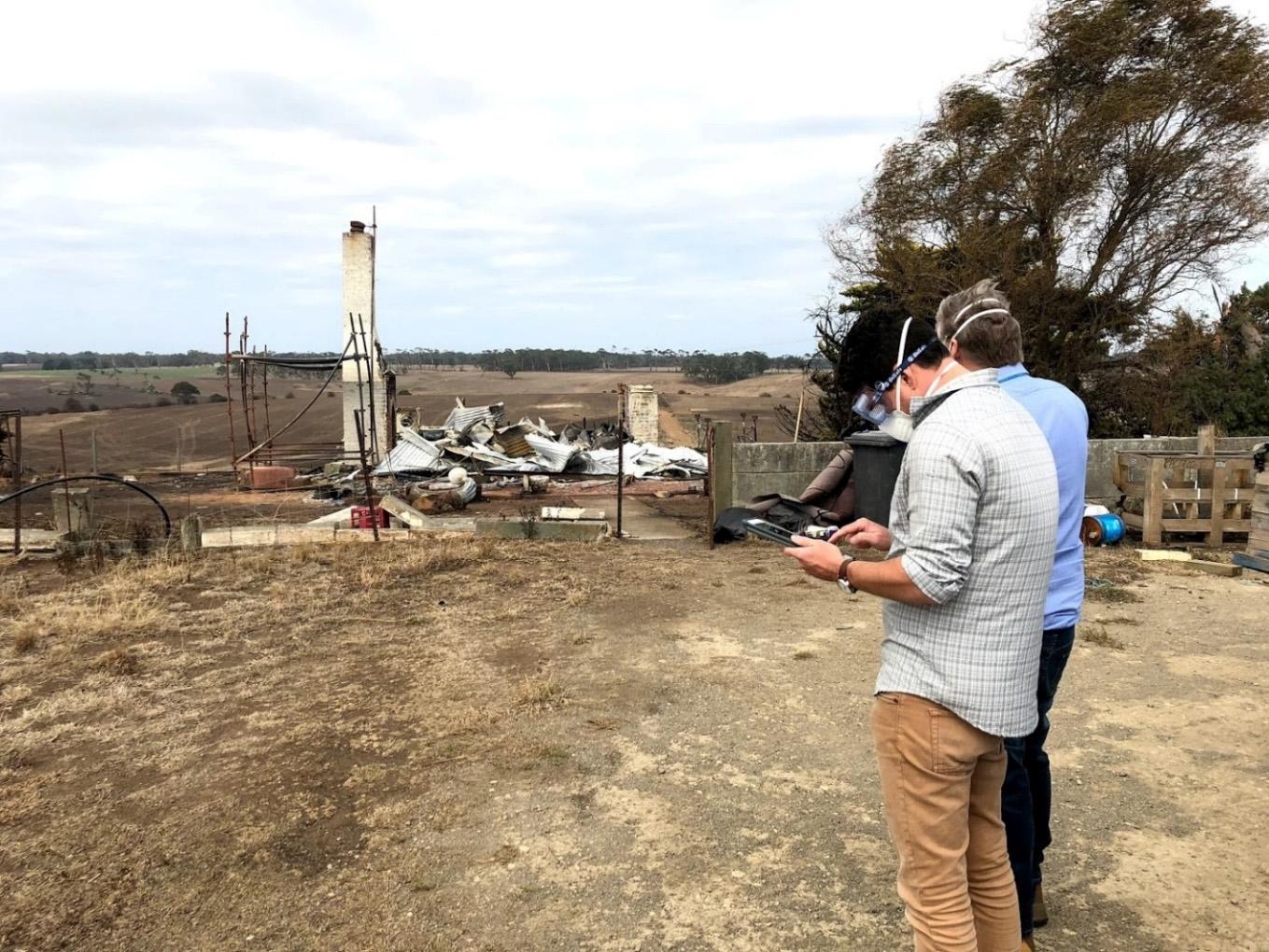
7 minute read
3.2 Purpose of impact assessment
Stakeholders who have responsibilities reporting IIA data discussed several limitations for expedited data reporting: expertise required to confirm data large/dispersed areas of impact collation of data from multiple sources perceived data sharing restrictions conflicting information competing response duties safe access to area of impact gradual presentation of impacts (for example health emergencies, heatwaves, floods) high risk of reporting incorrect data differences in data reporting mechanisms and technology. Stakeholders discussed the value of putting riders/caveats on information, offering ranges of data (for example ‘between 10–20’, or ‘at least 10’) or allowing comments on some metrics reported. For example, AV and EMV have modified the reporting metrics on injured persons to be a range, rather than an initial absolute figure. This adjustment has improved the confidence of AV to report data and allowed them to provide accurate ranges of data in a reduced time period. EMV is currently leading several projects to improve data accuracy and reporting of impact assessment data. These initiatives are discussed throughout this chapter.
Finding 1
The Inspector-General for Emergency Management finds the specific purposes of impact assessment are not clearly articulated and understood across the sector.
The sector has a broad understanding of the purpose of impact assessment but would benefit from additional guidance around the specific purposes, data collection triggers and audience for the data collected. Data collection, data accuracy and completeness will continue to be problematic without a sector-wide understanding of the purposes of impact assessment and the data required to address these purposes. Stakeholders engaged in this review agreed that impact assessment has multiple purposes. Overall, they stated the purpose of impact assessment was to inform relief and recovery activities, and to provide information to the community through trusted political or community sources. The purpose of impact assessment is documented in a number of key sector policies, manuals and guidelines. These purpose statements are presented in Appendix 2 (p.65). These documents describe a number of different purposes with varying levels of detail and distinction between the three stages of impact assessment. The review highlighted a broad range of stakeholder perceptions about the specific purposes of impact assessment and which of these purposes were considered core. The different perceptions were in part associated with the variety of organisational roles in IIA and/or SIA. Different interpretations of the purpose of impact assessment were also observed across the three tiers (local, regional, state) of emergency management, even when stakeholders were working on the same phase (IIA, SIA) of impact assessment. One stakeholder’s follow-up comment was ‘…the purpose is clear within organisations, but not across [the sector].’ Table 2 (p.30) illustrates the variety of purposes, timeframes and uses for impact assessment data identified and proposed by stakeholders throughout the review. Stakeholders cited more purposes for impact assessment compared to those identified in sector doctrine, and there was some agreement regarding data considered to be urgent.
Relief and recovery decision-making (commonly identified as fundamental purposes of impact assessment) both involve a wide range of decisions and multiple organisations working with the community, however, the data collection requirements to serve these purposes are not as clearly understood. This is particularly true of long-term recovery activities. There was a lack of clarity within the sector regarding the specific decisions to be made and the information required to inform these decisions. Stakeholders also discussed a lack of understanding of the triggers that determined different types and levels of data collection. Consequently, there was a lack of clarity around the measurement, details and timelines required for the various impact assessment purposes. Illustrating the above is:
The key components of impact assessment would be probably having the tools you need, having the skills, understanding what you need out of it as well and understanding why you're doing it.
Table 2: Impact assessment purposes, timeframes and users as identified by stakeholders.
PURPOSE URGENCY SUB-PURPOSES INFORMATION TYPE PRIMARY USER
Public information Urgent General information Assistance Basics, core data Public via media and EMC/ politicians
Affected community information Urgent Safety Recovery Basics, location info, safety advice, personal requirements
Media reports Urgent Basics, core data –increasing in data over time Information and warnings, ICC, EMC, local government
Media
Emergency classification Second priority As per escalation and classification requirements EMC, DPC, politicians
Funding Third priority Specific impacts and costs, classification details, PENA EMV/ DTF/ DPC, government, local government
Relief decisionmaking Urgent Displacement Health Critical services Core data, basics DHHS, local government, ICC, public
Recovery decisionmaking Third priority Built Natural Economic Social Specific impacts in four environments of recovery, PENA Government, local government, public
Reconstruction Third priority Specific impacts and costs, prioritisation, PENA Government, local government
Response activities Urgent Emergency characteristics, escalation information Responder agencies in emergencies of longer durations
Political stability Urgent Basics, core data Politicians
As noted in section 2.2 (p.19) IGEM identified several reviews and policy papers produced in the last 10 years which described the sector’s limited understanding of the purpose of impact assessment. This lack of understanding was found to contribute to inconsistent or inaccurate data collection and concerns of data completeness resulting in less than optimal prioritisation of funding, relief and recovery decisions. These documents have been outlined in the background section of this report (p.19). As an overview, these documents include:
State Government of Victoria (2011): VFR. This review included a recommendation for the state to ‘define the purpose of rapid impact assessment’ [Recommendation 75; 12]
State Government of Victoria (2012): White Paper [10]
VAGO (2013): Flood Relief and Recovery [17]. Many other plans, frameworks and reports have identified the importance of consistent and meaningful impact assessment data and proposed actions to improve the process. Four government stakeholders engaged in the review held reservations surrounding the current activities to develop impact assessment and questioned whether the issue of purpose in impact assessment was being adequately considered. For example:
So, those are issues around coordination, issues around definitions, about management of the data and about ownership. So, essentially still we see there to be a lack of a single source of truth in the data. It continues not to be timely or accurate, and the work that's being done is not a system-wide review for purpose.
The documents describing the stages of impact assessment indicate that IIA does not need to provide complete or accurate information and should be used to indicate the scale of the emergency. However, the data and measurement requirements for SIA are designed to collect more accurate information. Stakeholders who provide impact assessment data clearly articulated their internal collection techniques and measurements. However, they did not have a clear understanding of what was required to achieve a centralised impact assessment approach and how their data would contribute to the broader sector.
Stakeholders discussed how differing terms and language surrounding impacts and emergencies in general led to problems with accurate and complete impact assessment. The Australian Institute for Disaster Resilience (AIDR) publish a glossary of terms [30] which is endorsed by the Australasian Fire and Emergency Services Authorities Council. EMV has invested time in creating a data dictionary for the sector as not all organisations need to use the AIDR glossary (see section 3.3, p.32). Stakeholders spoke of confusion and frustration in understanding what the purposes of impact assessment were and focused on data that served their internal decision-making priorities. They indicated they would be more accommodating of impact assessment data collection responsibilities if they had a clear understanding of how the data would be used, and who needed to use it. These statements were made with the proviso that resources and training were available to support this work. A government stakeholder raised an example from the South-West Fires. Impact assessment data was used to apply for NDRRA Category C funding which is available from the Australian Government for clean-up and recovery grants. The system of data collection, validation and reporting led to information being used that did not meet the NDRRA requirements to accurately decide which primary producers were eligible for grants. A significant amount of work was required to rectify the issue to ensure all affected primary producers were able to apply for grants. The importance of aligning impact assessment data with national funding requirements was being addressed by EMV and DEDJTR (at the time of writing) to address ambiguities in the process and ensure procedures are appropriate for securing funding and supporting decision-making. There is a breadth of decisions required during and after an emergency, and public interest in impact information which increases the need to produce impact assessment data. Core and urgent impact assessment data may also vary depending on the nature of the emergency. EMV has started to examine the centralised impact assessment data collection process to ensure that all data collected has value in emergency management decision-making.
I think the whole thing [impact assessment] has many masters. So, you've got the political pull, you've got the financial pull, you've got the pulls around the human side of things, you've got all of these different pulls.






